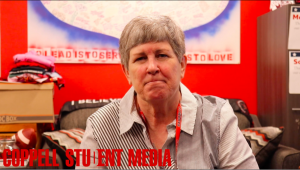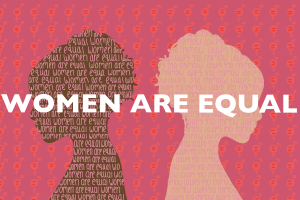Women’s History Month draws attention to year-round educational deficit
March is Women’s History Month in the United States. The Sidekick executive editor-in-chief Sally Parampottil discusses the importance of incorporating women’s history into regular lesson plans as opposed to just waiting for the designated month.
April 13, 2021
For women, March was a month of being neglected, harassed, dismissed and killed. It was a month filled with events, policies and remarks counteracting each step of progress women were able to make. In essence, it was like every other month of the year.
Oh, and it was Women’s History Month too.
I couldn’t say I was surprised. The patriarchy doesn’t hold back its cruelty towards women during the rest of the year; there was no reason to believe it would be polite enough to dedicate a month to celebrating women and their achievements without the small victories being ultimately eclipsed by injustice from all sides.
What has mildly surprised me for the past four years was the lack of inclusion of women’s history in school curriculums beyond just “the changing role of women in society” subcategory seen in every history textbook. This extends further than a shortcoming in Women’s History Month, though the few posters pinned around Coppell High School that most of the student population will not even see were the most I got from school; this issue resonates year-round.
Too often, women are generalized and written into textbooks as a demographic. We’re analyzed in terms of patterns and through the development of our rights and place in the world with significantly less individual focus like men are given.
While it’s true that this ties into the role women played throughout history and many might claim that there aren’t that many women who helped define society because of their previously subordinated role, there are numerous examples of women who have made huge contributions to the modern world and still go unrecognized.
In my GT biology class freshman year, we watched a documentary about the discovery of the structure of DNA. A main point of the film was how although two male scientists, James Watson and Francis Crick, receive credit for the discovery of the DNA double helix, their revelation was made possible because of the work of female researcher Rosalind Franklin.
If I were to give an example of incorporating women’s history into curriculums the right way, it’s that. It tied into the unit we were learning, it didn’t feel forced or contrived, and it taught me, as a ninth grader, that women had a history in STEM – not just a place, but a history – and a future too.
Just as Franklin was temporarily erased from the contribution list of the DNA discovery, it is likely that other women have had their marks on history painted over as well.
The pharaoh Hatshepsut was one of the great rulers of Egypt, and following her death, her successor and stepson Thutmose III (and eventually his son, Amenhotep II) tried to erase her from history, removing her image from statues, monuments and other records of her existence. Thankfully, it was not a complete destroyal of the past, and her story prevailed, yet it serves as another example of just how easy it could be to forget a woman so significant in history.
Franklin and Hatshepsut’s history was preserved, but who knows how many other women did not? How many accomplishments have been falsely credited to men or completely forgotten? There’s no sure way to tell. Some stories may just be lost forever, so in their place, it’s only right to emphasize the stories we do have.
Teach us about Ada Lovelace, the first computer programmer. Teach us about Marie Curie, a pioneering radioactive researcher. Teach us about Sandra Day O’Connor, a retired Supreme Court Justice who also happens to be inducted in the National Cowgirl Museum.
“For both men and women, the first step in getting power is to become visible to others and then to put on an impressive show,” O’Connor said. “As women achieve power, the barriers will fall. As society sees what women can do, as women see what women can do, there will be more women out there doing things, and we’ll all be better off for it.”
The handful of lessons on Queen Elizabeth I and Margaret Thatcher are nice, and I understand that we would learn more about Sam Houston than Miriam Ferguson (the first female governor of Texas, if you didn’t know – and you probably didn’t), but incorporating more contributions from women into lesson plans would show a lot of female students that their histories exist and matter. The women do indeed exist – scientists, mathematicians, authors, artists, politicians, you name it – and they deserve their place in scholastic settings.
And if that is too much to ask for the entire school year, start out by giving us those in-depth lessons during March – you know, Women’s History Month – at the very least. Baby steps, right? When it comes down to it, you don’t lose anything by giving women their well-deserved recognition; you benefit your female student population who have gone far too long only learning how men steer the course of the world.
By teaching young girls their history, you inspire them to make history.
Follow Sally (@SParampottil) and @CHSCampusNews on Twitter.
















Emma Meehan • Apr 20, 2021 at 6:59 pm
Love this! Informative and beautifully executed.